LSM1 / YJL124C Overview
- Standard Name
- LSM1 1
- Systematic Name
- YJL124C
- SGD ID
- SGD:S000003660
- Aliases
- SPB8
- Feature Type
- ORF , Verified
- Description
- Lsm (Like Sm) protein; forms heteroheptameric complex (with Lsm2p, Lsm3p, Lsm4p, Lsm5p, Lsm6p, and Lsm7p) involved in degradation of cytoplasmic mRNAs; also enters the nucleus and positively regulates transcription initiation; unlike most Sm-like proteins, Lsm1p requires both its SM-domain and C-terminal domain for RNA-binding; binds to mRNAs under glucose starvation, most often in the 3' UTR; forms cytoplasmic foci upon DNA replication stress 2 3 4 5 6 7
- Name Description
- Like SM 1
- Comparative Info
-
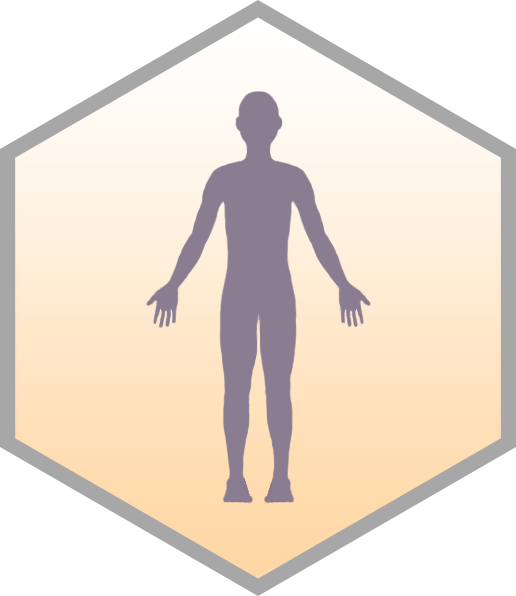
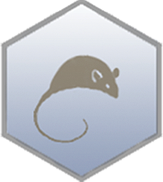
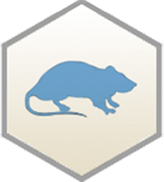
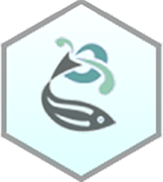
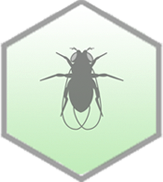
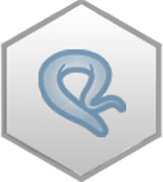
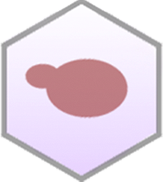
Sequence
The S. cerevisiae Reference Genome sequence is derived from laboratory strain S288C. Download DNA or protein sequence, view genomic context and coordinates. Click "Sequence Details" to view all sequence information for this locus, including that for other strains.
- Summary
- LSM1/YJL124C is located on the left arm of chromosome X between GCD14 tRNA methyltransferase subunit and MTC1 ribosome-interacting protein; coding sequence is 519 amino acids long with 1 SNP that causes an Ala/Val polymorphism at residue 15
Analyze Sequence
S288C only
BLASTN | BLASTP | Design Primers | Restriction Fragment Map | Restriction Fragment Sizes | Six-Frame Translation
S288C vs. other species
BLASTN vs. fungi | BLASTP at NCBI | BLASTP vs. fungi
S288C vs. other strains
Protein
Basic sequence-derived (length, molecular weight, isoelectric point) and experimentally-determined (median abundance, median absolute deviation) protein information. Click "Protein Details" for further information about the protein such as half-life, abundance, domains, domains shared with other proteins, protein sequence retrieval for various strains, physico-chemical properties, protein modification sites, and external identifiers for the protein.
- Summary
- Lsm1p is 172 amino acids long, longer-lived, low in abundance; contains disordered region at N-terminus; ubiquitinylated on 3 lysines, phosphorylated on 5 residues
- Length (a.a.)
- 172
- Mol. Weight (Da)
- 20304.2
- Isoelectric Point
- 5.8
- Median Abundance (molecules/cell)
- 5002 +/- 1016
- Half-life (hr)
- 16.7
Alleles
Curated mutant alleles for the specified gene, listed alphabetically. Click on the allele name to open the allele page. Click "SGD search" to view all alleles in search results.
View all LSM1 alleles in SGD search
Gene Ontology
GO Annotations consist of four mandatory components: a gene product, a term from one of the three Gene Ontology (GO) controlled vocabularies (Molecular Function, Biological Process, and Cellular Component), a reference, and an evidence code. SGD has manually curated and high-throughput GO Annotations, both derived from the literature, as well as computational, or predicted, annotations. Click "Gene Ontology Details" to view all GO information and evidence for this locus as well as biological processes it shares with other genes.
- Summary
- Subunit of the LSM1-7-PAT1 complex; binds RNA caps, mRNA, and chromatin; involved in mRNA decapping and decay; localizes to the P-body, nucleus, and cytoplasm
View computational annotations
Molecular Function
- Manually Curated
- enables chromatin binding (IDA)
- enables mRNA binding (IDA)
Biological Process
- Manually Curated
Complex
Macromolecular complex annotations are imported from the Complex Portal. These annotations have been derived from physical molecular interaction evidence extracted from the literature and cross-referenced in the entry, or by curator inference from information on homologs in closely related species or by inference from scientific background.
Phenotype
Phenotype annotations for a gene are curated single mutant phenotypes that require an observable (e.g., "cell shape"), a qualifier (e.g., "abnormal"), a mutant type (e.g., null), strain background, and a reference. In addition, annotations are classified as classical genetics or high-throughput (e.g., large scale survey, systematic mutation set). Whenever possible, allele information and additional details are provided. Click "Phenotype Details" to view all phenotype annotations and evidence for this locus as well as phenotypes it shares with other genes.
- Summary
- LSM1/YJL124C is a non-essential gene; null mutants are viable, slow-growing, and associated with a variety of phenotypes that significantly affect cellular functions and overall fitness. Mutants lacking LSM1 exhibit decreased resistance to acidic pH levels, which may compromise their survival in acidic environments, and an increased rate of apoptosis, indicating heightened programmed cell death. The budding pattern and cell shape are abnormal, suggesting disruptions in normal cellular processes, while cell size is decreased. The chronological lifespan of lsm1 null mutants is also reduced, reflecting a potential trade-off between growth and longevity. Competitive fitness is impaired, leading to decreased viability in resource-limited conditions. Endocytosis is reduced, which may hinder nutrient uptake, and the rate of fermentative growth is diminished, indicating metabolic challenges. Growth during the exponential phase is also decreased, and these mutants exhibit increased sensitivity to heat, making them more vulnerable to elevated temperatures. Resistance to killer toxins is decreased, and nuclear morphology is abnormal, which could impact cellular organization and function. Although oxidative stress resistance is increased, UV resistance is decreased, further underscoring their vulnerability to environmental stressors. Vacuolar morphology is abnormal, potentially disrupting cellular storage and waste management. Overexpression of LSM1 decreases viability.
Classical Genetics
- null
- apoptosis: increased
- chemical compound accumulation: increased
- chemical compound excretion: decreased rate
- chromosome/plasmid maintenance: abnormal
- growth in exponential phase: decreased rate
- heat sensitivity: increased
- killer toxin resistance: decreased
- nuclear morphology: abnormal
- nutrient uptake: decreased rate
- protein/peptide distribution: abnormal
- resistance to chemicals: decreased
- transposable element transposition: decreased
- viable
- overexpression
- null
- acid pH resistance: decreased
- budding pattern: abnormal
- cell shape: abnormal
- cell size: decreased
- chemical compound accumulation: abnormal
- chemical compound accumulation: decreased
- chemical compound accumulation: increased
- chromosome/plasmid maintenance: abnormal
- chronological lifespan: decreased
- competitive fitness: decreased
- endocytosis: decreased
- fermentative growth: decreased rate
- heat sensitivity: increased
- metal resistance: increased
- nuclear morphology: abnormal
- oxidative stress resistance: increased
- protein/peptide accumulation: increased
- resistance to chemicals: decreased
- resistance to chemicals: increased
- respiratory growth: absent
- respiratory growth: increased rate
- stress resistance: decreased
- stress resistance: increased
- toxin resistance: increased
- transposable element transposition: decreased
- transposable element transposition: increased
- UV resistance: decreased
- vacuolar morphology: abnormal
- vegetative growth: abnormal
- vegetative growth: decreased rate
- viable
Large-scale Survey
Interaction
Interaction annotations are curated by BioGRID and include physical or genetic interactions observed between at least two genes. An interaction annotation is composed of the interaction type, name of the interactor, assay type (e.g., Two-Hybrid), annotation type (e.g., manual or high-throughput), and a reference, as well as other experimental details. Click "Interaction Details" to view all interaction annotations and evidence for this locus, including an interaction visualization.
- Summary
- Lsm1p interacts physically with proteins involved in translation; LSM1 interacts genetically with genes involved in transcription
2300 total interactions for 1166 unique genes
Physical Interactions
- Affinity Capture-MS: 131
- Affinity Capture-RNA: 209
- Affinity Capture-Western: 37
- Biochemical Activity: 1
- Co-localization: 1
- Co-purification: 23
- PCA: 3
- Protein-RNA: 5
- Reconstituted Complex: 2
- Two-hybrid: 58
Genetic Interactions
- Dosage Growth Defect: 11
- Dosage Lethality: 5
- Dosage Rescue: 1
- Negative Genetic: 1240
- Phenotypic Enhancement: 9
- Phenotypic Suppression: 12
- Positive Genetic: 430
- Synthetic Growth Defect: 69
- Synthetic Lethality: 31
- Synthetic Rescue: 22
Regulation
The number of putative Regulators (genes that regulate it) and Targets (genes it regulates) for the given locus, based on experimental evidence. This evidence includes data generated through high-throughput techniques. Click "Regulation Details" to view all regulation annotations, shared GO enrichment among regulation Targets, and a regulator/target diagram for the locus.
- Regulators
- 2
- Targets
- 0
Expression
Expression data are derived from records contained in the Gene Expression Omnibus (GEO), and are first log2 transformed and normalized. Referenced datasets may contain one or more condition(s), and as a result there may be a greater number of conditions than datasets represented in a single clickable histogram bar. The histogram division at 0.0 separates the down-regulated (green) conditions and datasets from those that are up-regulated (red). Click "Expression Details" to view all expression annotations and details for this locus, including a visualization of genes that share a similar expression pattern.
Summary Paragraph
A summary of the locus, written by SGD Biocurators following a thorough review of the literature. Links to gene names and curated GO terms are included within the Summary Paragraphs.
Last Updated: 2006-01-26
Literature
All manually curated literature for the specified gene, organized into topics according to their relevance to the gene (Primary Literature, Additional Literature, or Review). Click "Literature Details" to view all literature information for this locus, including shared literature between genes.